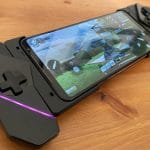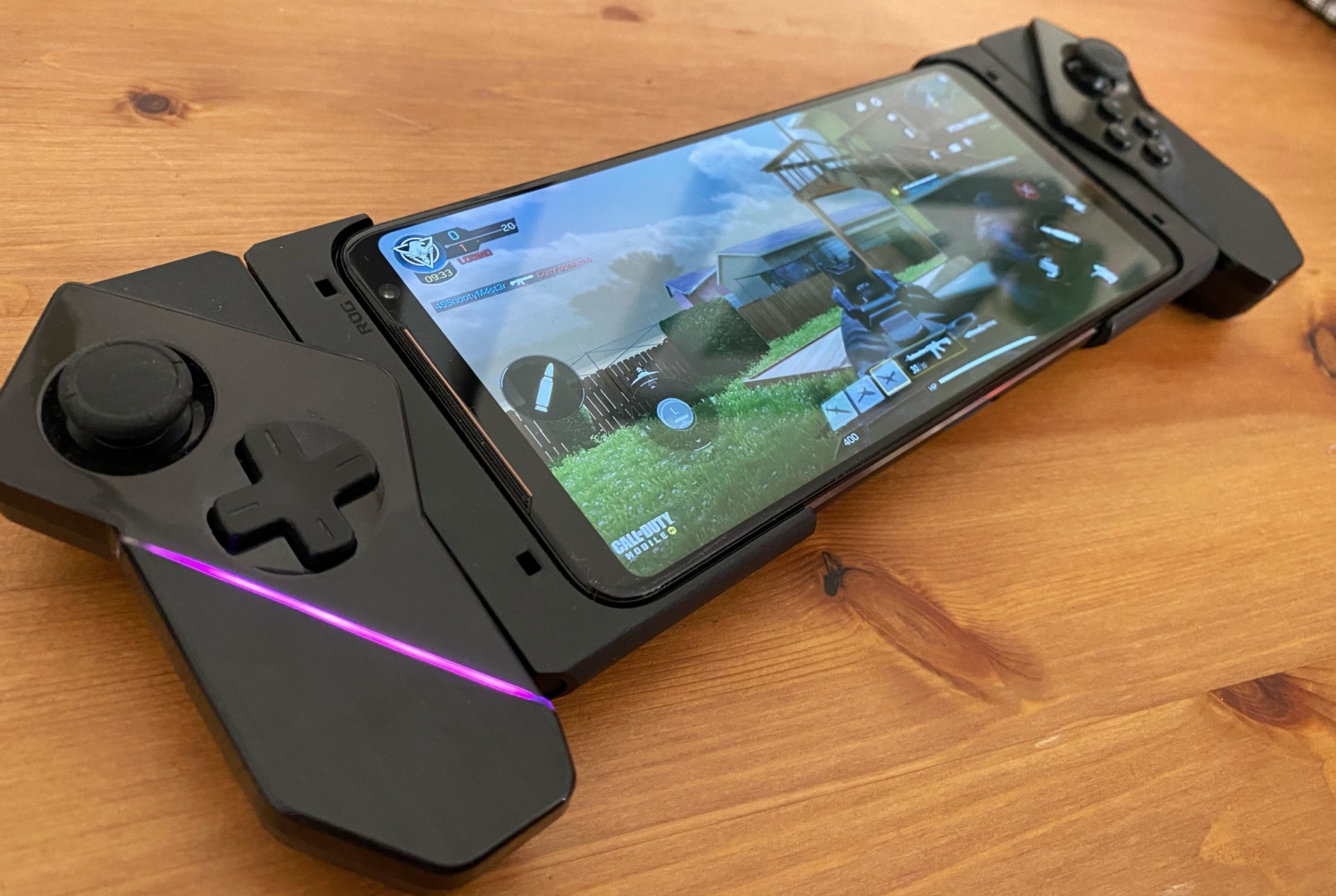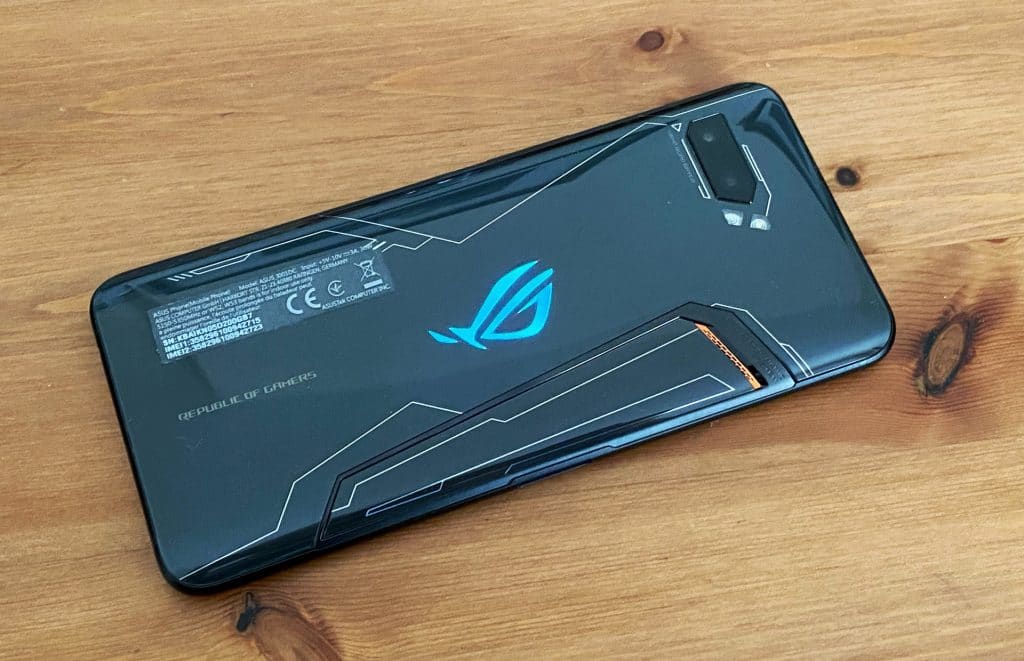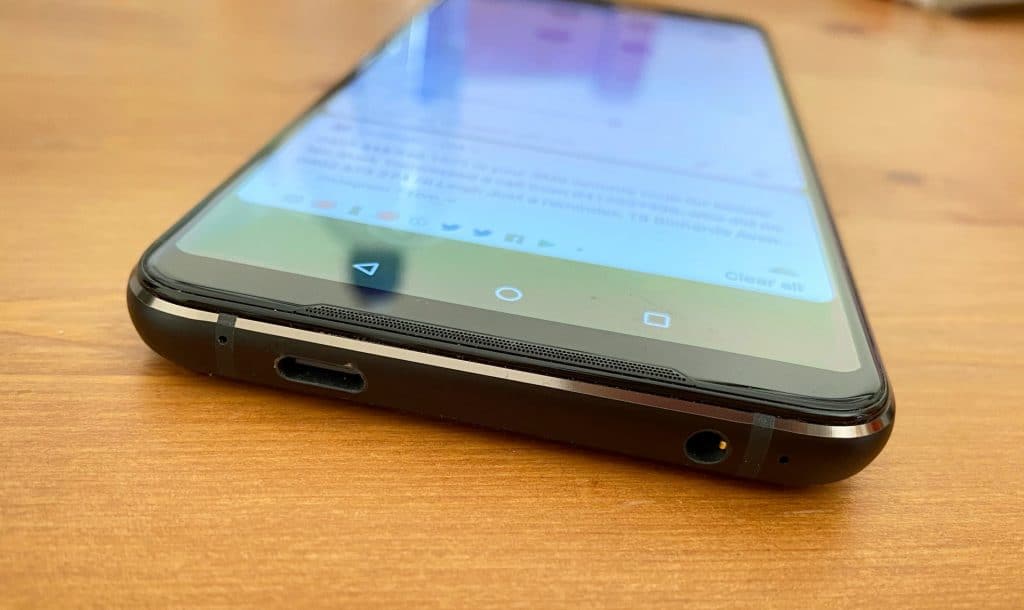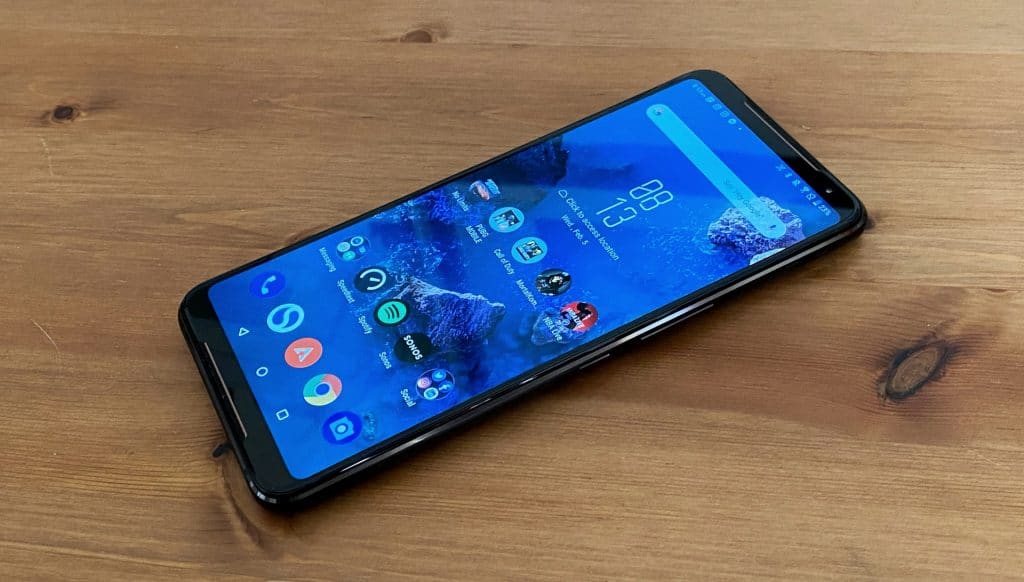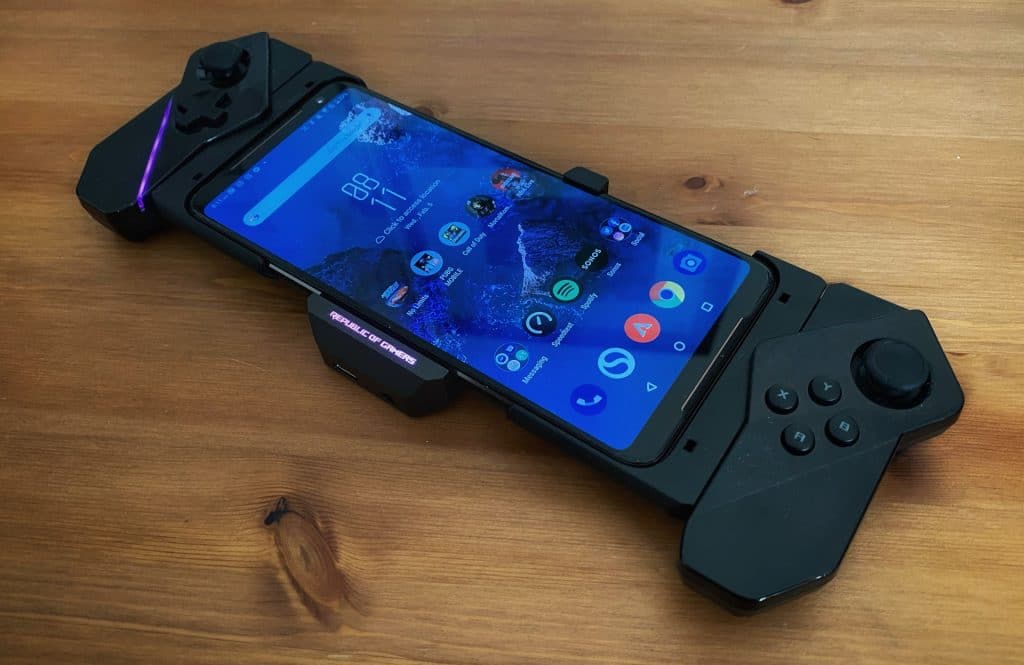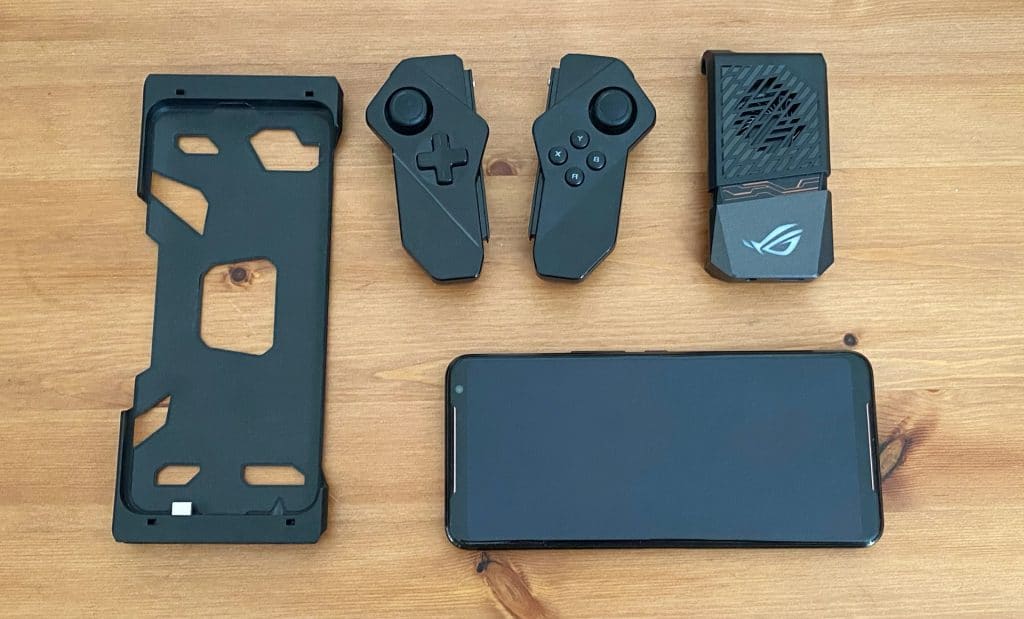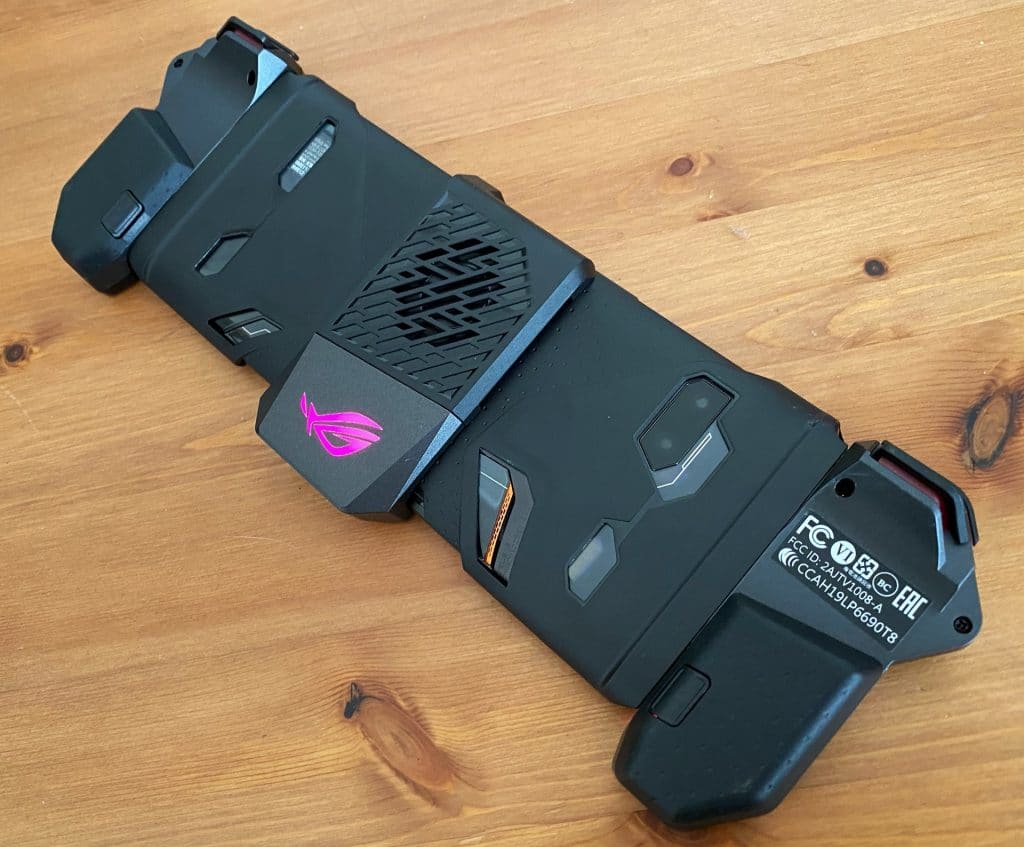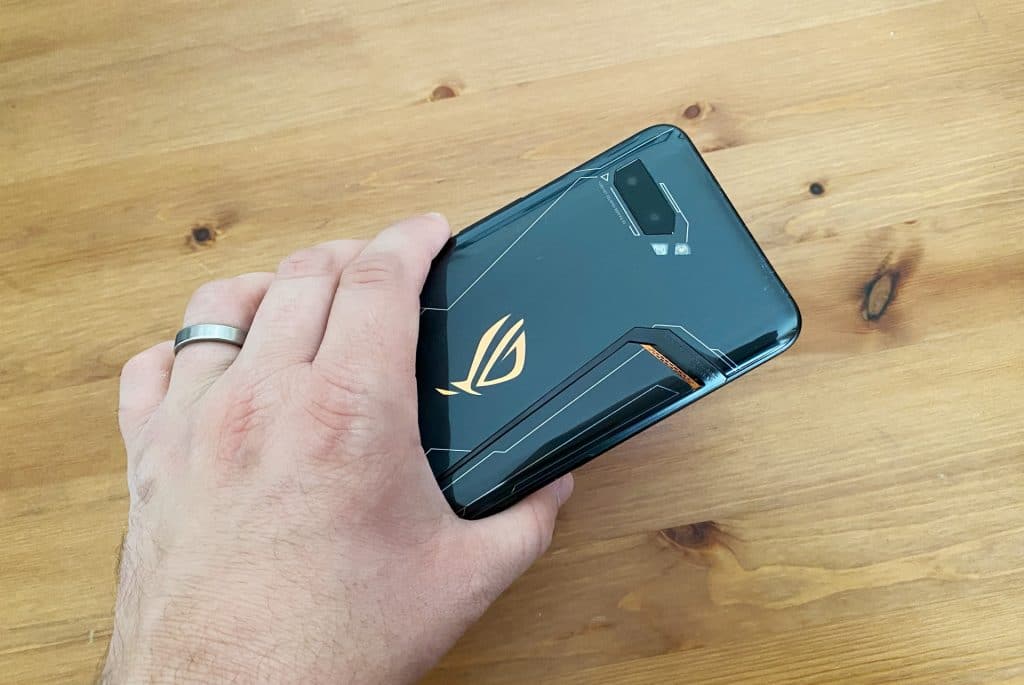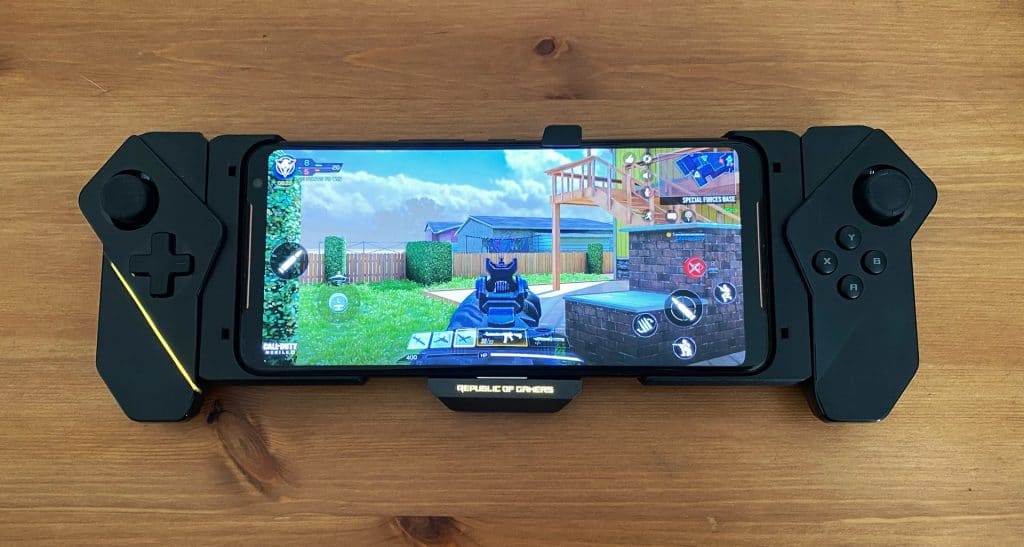Quick review
The good
The not-so-good
Not sure if you need a gaming console or a phone? Why not have both: the Asus ROG Phone II brings two concepts together in the one device, with intriguing results.
Design
A little off kilter from the typical clean metal and glass look, Asus is going for personality, or the sort of personality gamers tend to like.
We’re not just talking slick surfaces, but slick surfaces with edges, gills, and an accent or two of orange, both at the side and around the speakers.
In line with typical gamer-oriented gear, there’s even a logo from the Asus Republic of Gamers “ROG” design that glows colours on the back.
Glance at the Asus ROG Phone II, and it’s clear this isn’t your typical iPhone. This is the definition of something different, and that’s clear when you look through the specs.
Features
It’s not unusual to see impressive specs on phones costing over $1500 these days, and the Asus ROG Phone II certainly hits a new height.
While the eight-core Qualcomm Snapdragon 855 Plus inside certainly screams high-end the way we’ve seen it on other phones, it’s the 12GB RAM is the spec that tells us just how top tier the ROG Phone II is, partnered with a staggering 512GB storage, too. That makes it a little more grunt-filled than many PCs out there, and quite a few Macs, too. It’s loaded with Android 9.0 “Pie”, so don’t expect it to run Mac or Windows titles, but it’s still impressive enough in the phone space.
Connections also keep this thing on its toes, with Category 18 4G LTE, boasting speeds that can hit 1.2Gbps down and 150Mbps up (network dependent, of course), as well as Bluetooth 5, GPS, NFC, and the recent high-speed wireless connection that is 802.11ax WiFi, also compatible with 802.11a/b/g/n/ac.
There’s even a 3.5mm headset jack on the phone, something you don’t see every day on phones anymore. Oh, and there are two Type C USB connections on this phone, one of which is for charging, but the other is for Asus’ dedicated accessories. Crazy.
Cameras are a little more standard, with a 48 megapixel standard alongside a 13 megapixel ultra-wide, while the front holds a 24 megapixel camera. Not quite the crazy three, four, or five camera setup you might expect to find in an expensive phone.
The screen, however, is something a little different: at 6.6 inches and running the Full HD resolution of 2340×1080, it might not seem all that special, but it can run at a faster refresh rate of 120Hz, making it ideal for gamers, and the sort of thing they may have come to expect out of gaming-focused monitors and laptops.
The other thing gamers might be expecting is power, because what’s the point of gaming if your device conks out? To help with that, the Asus ROG Phone II comes packing one of the biggest batteries of the bunch, a 6000mAh battery. Yikes.
In-use
Switch the ROG Phone II on, and you’ll be greeted by Android, and let’s just say, if you know how to use Android, there’s very little that makes the ROG Phone II difficult.
Widgetised home screens aplenty and supported apps, this is Android with Google’s support, so you can do everything you’d normally expect to do on an Android phone, and then a little bit more.
There’s an extra layer that Asus has built into the phone with the help of software, allowing you to tweak some of the parts of the phone, such as change colour of the light-up ROG logo on the back, and map controller buttons to the physical controller supported by the phone.
It’s still a phone, by the way, and you can keep using it as such, but if you’re a gamer keen on using Android as a portable gaming console, Asus is making sure that’s being catered for, as well.
Performance
With the focus for the Asus ROG Phone II squarely on gaming, you won’t be surprised to find this phone just performs beautifully.
Armed with the high-end Snapdragon 855 Plus and a crazy 12GB RAM, not to mention the half terabyte of storage, the Asus ROG Phone II has so much grunt, it overshadows many a computer.
Simple day-to-day productivity apps will run with no problems, as will the fair amount of multitasking you know you’re going to do. Factor in some multimedia and gaming, and the ROG Phone II handles itself so well, you’ll wonder if you’re using a phone or a computer.
In fact, it has better specs than many of the computers we see still, making it built for either, and a winner in both departments, too. It’s not your ordinary phone, and that’s a good thing.
Helping this is the screen, which is a special bit of a 6.6 inch display, capable of running a little faster in select apps and games, which essentially makes game vision appear more like a proper TV. Not everything will support it, but those that do deliver a smoother experience, the likes of which we’ve seen on only one set of phones thus far, the Google Pixel 4 range, which supported the technology, too.
Also set to be pretty high-end is the 4G performance, which can hit a gigabit connection, but invariably brought the speed closer to 300Mbps max in our test on the Telstra 4GX network in Sydney’s CBD.
Camera
Even though the specs and screen are something special, the camera setup isn’t the most amaze balls thing out there, especially on a phone this high-end. Rather, it’s a touch underwhelming, and more like what you might expect on either a mid-range model or something just above.
As such, there’s a 48 megapixel standard camera paired with a 13 megapixel ultra-wide, the former handling imagery well enough, but not exactly standing out in the camera space. In fact, the 48 megapixel scales those images back to 12 megapixels, effectively giving you four times the quality, but a comparable image size as you jump from standard back to ultra wide.
In terms of shots, we’re not talking the gratest of images. In daylight, the colour is nice and the results are clear, but it’s easy to feel like when there’s less light, the camera performs more like that in the mid-range, meaning imagery can be a little blurred or darker than expected.
The same is true with the front facing camera, a 24 megapixel camera which in our tests did much the same with the downscaling, handling it by a multiplier of four and giving a 6 megapixel mediocre selfie. Great for outside, less useful indoors.
It’s clear the Asus ROG Phone II is a phone built for gaming when you look at it, and while you can take photos on the phone, that’s not one of the focuses Asus has clearly spent time on for this handset.
Battery
One area that clearly pushes ahead of practically everything else is the battery, which can hit two days if you let it.
Given the massive 6000mAh size battery in the Asus ROG Phone II, you probably won’t be surprised to see it handles the day and then some. Our tests delivered a full two days of life, though that will be dependent on how you use the ROG Phone 2.
If you use the ROG Phone like it’s a gaming console — which is how Asus thinks most people will buy the console — you’ll likely see a good day’s worth of performance, though that’s dependent on how much use you get out of the phone on the day to day. There’s no consistent way to measure gaming performance, but a battery this size, expect a day.
Our tests saw use consistent with more normal phone use, and that achieved two days of battery life for the Asus ROG Phone II, giving the Asus phone the best battery life of any phone in the past year. Crazy.
Value
Even the value isn’t too far off the mark, with an impressive spec list, lovely screen, and excellent battery life coming in at $1699. That’s a high price, for sure, but it comes with extras in the unusually shaped unorthodox box.
Aside for the phone, you’ll find a case, a cooling component to keep the phone comfortable to use, and a game controller, too, thereby cementing its whole design as a gaming phone.
While a buck shy of $1799 does make the Asus ROG Phone II one of the most pricey phones around, given the staggering set of specs, the lovely screen, and the extras you get, it’s one of the few times the value is harder to argue with.
What needs work?
But even though the battery and value are easy to come to grips with, the size and weight are not.
Without the extra case or gaming controller attached to the ROG Phone II, and the phone is already large enough. A 6.6 inch display flanked by bezels is no small sight, and at 9.48mm thick, it’s noticeable in your pocket, too.
The weight is also seriously there, sitting at one of the heaviest smartphone weights to date: 240 grams. To put that into perspective, it’s a good 14 grams heavier than the already quite heavy iPhone 11 Pro Max, making this marginally more cumbersome.
Once you attach the accessories, it actually gets worse. While each adds a bit of weight, the size is hard to look past, with a casing that makes it near impossible keep the controller in your pocket comfortable. Turn the ROG Phone II into that not-quite Nintendo Switch and it becomes so big, leaving it out of your pocket becomes a risky exercise in how quickly you want it pinched, partially because it’s so big, you’d never notice someone’s hand feeling it out. It’s crazy, because whether you’ve attached the accessories or not, the whole thing just feels slightly off balance, thanks to the staggering weight.
Heaven forbid you leave the Asus ROG Phone II in that gaming configuration and then try to use it as a phone, because then it just feels awkward and cumbersome overall. Try holding a Nintendo Switch up to your ear, and you get a vague idea of what holding an Asus ROG Phone II in its gaming setup is like.
The awkwardness of the Nokia N-Gage is reborn with this phone, at least when used as a phone. Use it as a gaming console powered by Android, and the Asus ROG Phone II makes sense. Take the odd phone call with it, and it becomes just that much harder to get your head across.
There are ways to mitigate this, though. You can wirelessly use the controllers, but then you need some way of holding the phone up, and there’s no kickstand built in. Call it a bit of an oversight, because it would have been a brilliant inclusion, especially when you need the awkward plastic case if you want to mount the controllers to the side.
The frustrating thing is you can see what Asus is getting at, and it should work really well for gamers, or more specifically, gamers who can be bothered jumping through hoops to make the controllers worthwhile.
That might sound strange, but it’s true, because the Asus ROG Phone II controllers aren’t just plug and play components. You can’t just launch Call of Duty or Fortnite and hope for the best. Rather, you need to plug them in, load up the Asus gaming software, and configure the controllers until you can play the games with the controls.
You’re basically mapping the physical controls to the virtual ones, filling in a gap and doing what the on-screen controls ask of you, but with physical options. However you have to set it up, otherwise the controls do nothing, and you’ll be left sitting there thumbing the buttons and pads hoping your in-game character would do something, only to be left waiting for that moment.
Oh, and there’s no wireless charging, either, something we’d expect not just on a phone this well spec’d, but one that costs this close to the two thousand dollar mark.
Final thoughts (TLDR)
There’s clearly a push for phones and tablets to take over the portable gaming space, and with the availability of so many games on Android, you shouldn’t be surprised to see the phone is the next battleground.
After all, why bring both a phone and a gaming console around if you don’t have to?
The Asus answer to this conundrum is a pretty neat concept, albeit one that sticks out of you pocket quite obviously: long, thick, big, and bulky might be words applicable to some things in your pants, but your phone might not want to be it.
If you don’t mind those words being used for a phone that might not be as comfortable in the front pocket of your jeans and have a love for gaming, the Asus ROG Phone II makes a lot of sense, especially if you love your Android games to the point of buying a phone specifically for them.
It’s not perfect, and the camera and unwieldy size make it a little harder for everyone to grapple with, but with one of the best spec sets around, not to mention the inclusion of gaming accessories, we can see the draw, and gamers might just, too. It’s like a Switch, but for phones. If that’s what you want, you’ll find it here.
